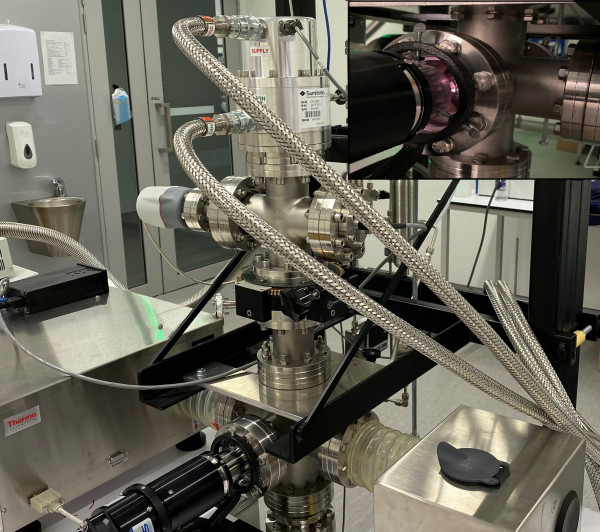Signs of life: Can the building blocks of life be found on Saturn’s largest moon, Titan?

Dr Courtney Ennis of the University of Otago and team are exploring whether the building blocks of life can form in the atmosphere of Titan, Saturn’s largest moon
Published on 3 November 2021
In 2027 the NASA/Johns Hopkins Dragonfly spacecraft will embark on a journey to Titan. Titan’s environment resembles the very early Earth and Dragonfly will scour its surface in search of complex organic molecules. Astrobiologists are predicting they will find multi-component crystal minerals – ‘co-crystals’ – which could facilitate chemical reactions to create biologically-important compounds like the elementary units of DNA.

The Titan surface astrochemistry experiment that will be used in this research. The inset shows UV irradiation of a simulated Titan ice surface. Image: supplied
Dr Ennis has assembled an international multidisciplinary team for this Marsden Fund Standard project to explore how these Titan co-crystals could generate life’s building blocks. They have established a new laboratory setup at the University of Otago which mimics the icy surface, atmospheric aerosols, and radiation environment of Titan. Under these conditions co-crystals are expected to form some of the organic chemicals necessary for life to develop. From this, Ennis’s team will be able to offer the Dragonfly mission some molecular clues as to what it will find across Titan’s frozen tundra. This project has exciting implications for the field of astrobiology as well as the deeper human questions around the origins of life on Earth and the prospect of extra-terrestrial life.
